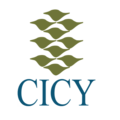Por favor, use este identificador para citar o enlazar este ítem:
http://cicy.repositorioinstitucional.mx/jspui/handle/1003/1213| Wild Vanilla planifolia and its relatives in the Mexican Yucatan Peninsula: Systematic analyses with ISSR and ITS | |
| SARA VILLANUEVA VIRAMONTES MARIANA HERNÁNDEZ APOLINAR GERMAN CARNEVALI FERNANDEZ-CONCHA ALFREDO DORANTES EUAN GABRIEL ROLANDO DZIB JAIME MARTINEZ CASTILLO | |
| Acceso Abierto | |
| Atribución-NoComercial-SinDerivadas | |
| http://dx.doi.org/10.17129/botsci.668 | |
| GENETIC IDENTIFICATION MOLECULAR MARKERS PHYLOGENETIC ANALYSIS VANILLA WILD POPULATIONS | |
| Background: Vanilla planifolia, a threatened species, is distributed naturally in semi-deciduous and evergreen rain forests of southeastern Mexico and parts of Central America. In the wild, it is difficult to diagnose from another sympatric Vanilla species, and individuals with reproductive structures are usually required. Questions: Can ISSR discriminate wild individuals of Vanilla planifolia from other sympatric species of the genus? Can phylogenetic analyses of ITS recover the monophyly of V. planifolia and help identify Vanilla species? Studied species: The vanilla (V. planifolia), the second-most important economically spice in the world. Study site and years of study: Plant material was collected during 2014 in the Mexican Yucatan Peninsula. Methods: We analyzed 88 wild individuals of several Vanilla species. Individuals of five species of Vanilla reported for the region were used as reference. 84 ISSR loci were analyzed using three clustering methods. A phylogenetic inference using ITS was performed. Results: ISSR markers clearly discriminate wild Vanilla planifolia, finding definite genetic structure within the species. The three clustering methods identified genetic relationships with congruent patterns. Five groups were found and they corresponded with the species studied. Phylogenetic inference of ITS sequences supported the monophyly of the Vanilla and the resulting cladograms were coherent with the clustering pattern observed in the ISSR studies. Conclusions: Both ISSR and ITS analyses are able to identify V. planifolia. Molecular data suggest the presence of V. pompona and a new species of Vanilla in the Yucatan Peninsula. | |
| 2017 | |
| Artículo | |
| Botanical Sciences, 95(2), 169-187, 2017. | |
| Inglés | |
| Villanueva-Viramontes, S., Hernández-Apolinar, M., Fernández-Concha, G. C., Dorantes-Euán, A., Dzib, G. R., & Castillo, J. M. (2017). Wild Vanilla planifolia and its relatives in the Mexican Yucatan Peninsula: Systematic analyses with ISSR and ITS. Botanical Sciences, 95(2), 169-187. | |
| BIOLOGÍA Y QUÍMICA | |
| Versión publicada | |
| publishedVersion - Versión publicada | |
| Aparece en las colecciones: | Artículos de Investigación Arbitrados |
Cargar archivos:
| Fichero | Tamaño | Formato | |
|---|---|---|---|
| id41997_2017_Villanueva_Sara.pdf | 3.23 MB | Adobe PDF | Visualizar/Abrir |
